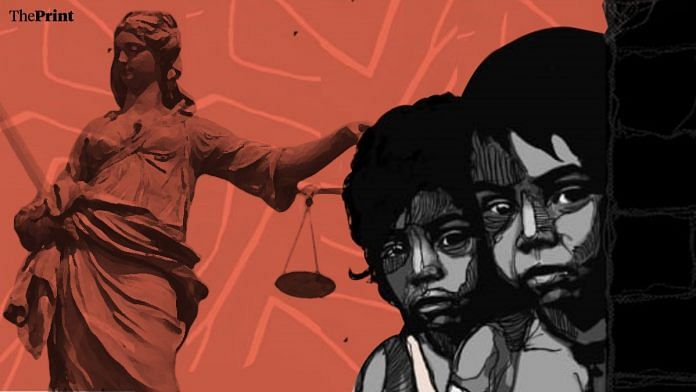New Delhi: Children accused of offences where the maximum sentence is more than seven years but in which no minimum sentence is prescribed will no longer be tried in adult courts, and from now on, district magistrates as well as the additional district magistrates will be allowed to issue adoption orders.
These are among the major amendments to the Juvenile Justice Act, 2015, that the union cabinet chaired by Prime Minister Narendra Modi approved Wednesday.
The amendments also state that crimes committed by children, in which the minimum sentence is less than seven years, will be categorised as “serious” and not “heinous” offences.
In effect, this will mean that such children will be treated as juveniles and will not have to go through the adult criminal justice system.
“Under the act, offences where the maximum sentence is more than seven years but no minimum sentence is prescribed, or a minimum sentence of less than seven years is provided shall be treated as serious offences,” Union Minister for Women and Child Development Smriti Irani said at a press conference Wednesday.
At present, the Act contains offences under three categories: petty, serious and heinous.
In January 2020, the Supreme Court had observed that offences that carried maximum of more than seven years imprisonment, but with no minimum sentence of fewer than seven years should be treated as ‘serious’ and not as ‘heinous’ offences.
During the hearing, senior Advocate Siddharth Luthra had pointed out to the bench that there was a fourth category of offences, in which the minimum sentence is less than seven years. He also said that in some cases, there is no minimum sentence prescribed but the maximum sentence is more than seven years.
The court had then asked the law and home ministries to make sure that the fourth category of offences was addressed by Parliament as early as possible or by the executive through an ordinance.
Wednesday’s cabinet decision addresses these issues.
“This is a welcome move and would help the cause of juvenile justice. This characterisation was important because, as per the prevailing law, a child below 18 years has to be treated as a juvenile/child for all purposes. There is, however, one exception to this — where the child is alleged to have committed a ‘heinous offence’. If a child has committed a ‘heinous offence’, the child (if between the age of 16-18 years), can be tried as an adult and taken out of the protective umbrella of the juvenile justice system,” said Bharat Chugh, a former civil judge and now advocate at the Supreme Court. “The amendment seeks to prevent that from happening by limiting the ambit and definition of ‘heinous offences’.”
Also read: Modi govt failed to frame plan to improve management of child care institutions: Plea in SC
Empowering district magistrates
In addition, the cabinet also approved amendments to the Act that will now empower district magistrates as well as the additional district magistrates to issue adoption orders.
“The amendments include authorising district magistrate including additional district magistrate to issue adoption orders under Section 61 of the JJ Act, in order to ensure speedy disposal of cases and enhance accountability,” said a government press release.
All functions related to adoption will now come under the district magistrate. In addition, children who have suffered trafficking, drug abuse or have been rescued or children abandoned by their guardians too will come under child in need of protection or CARE, the release added.
“If children have been reunited with their parents or are found dead, that data too will be under the district magistrate, which will be given to the state government for proper evaluation,” Irani said at the press conference. “In addition, DMs and ADMs can also decide adoption cases and appeals can be done at the divisional commissioner level.”
In addition, to enhance accountability, the amendments have also empowered district magistrates to monitor agencies responsible for implementing the JJ Act.
Also read: This is the reason why Indians adopt more girls than boys






